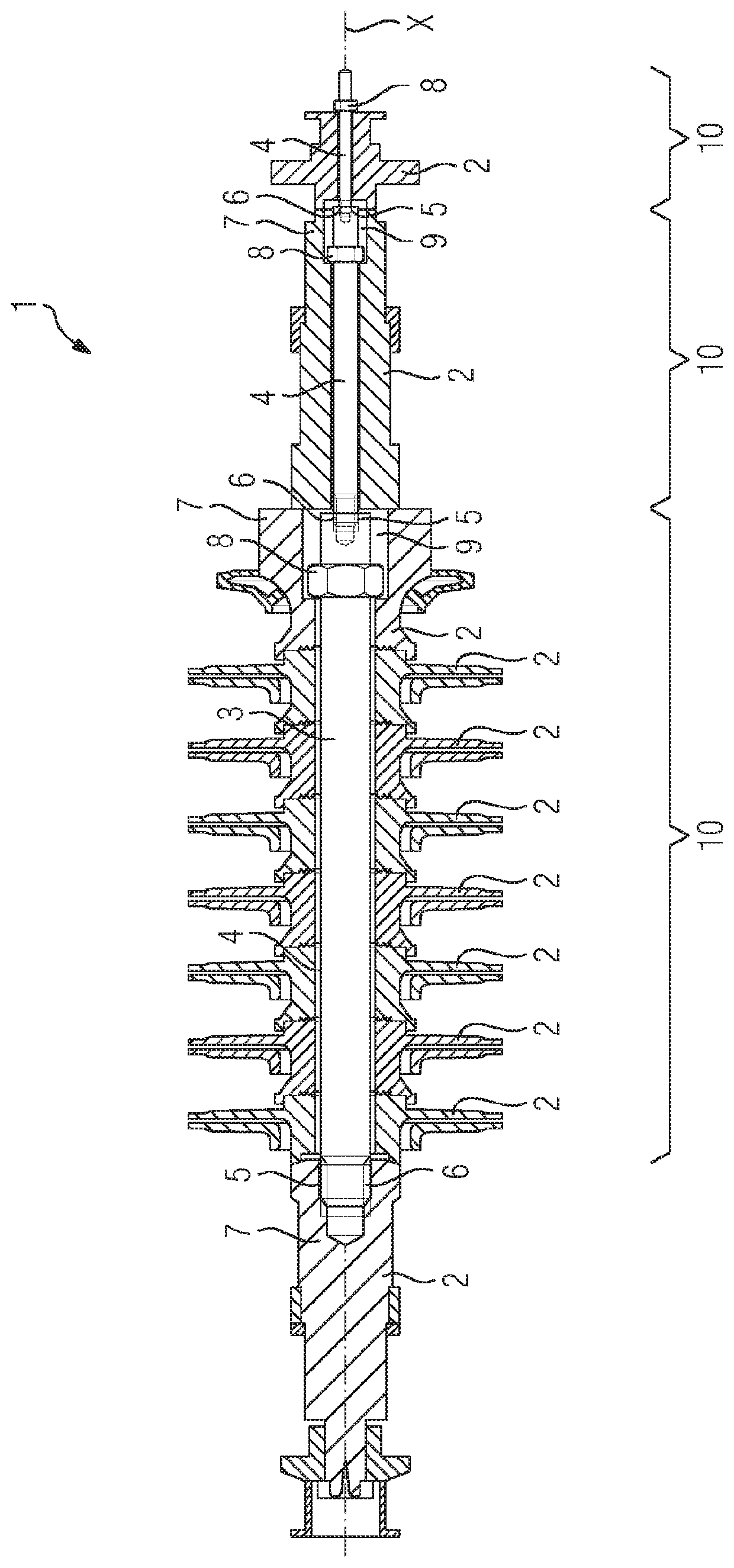Rotor for a turbomachine
a turbomachine and rotor technology, which is applied in the direction of machines/engines, mechanical apparatus, liquid fuel engines, etc., can solve the problems of limiting the possible rotational frequency of the compressor rotor, unable to increase the tensile force of the tie rod to an arbitrary extent, and limiting the power of the compressor power. , to achieve the effect of convenient assembly of individual tie rod sections and advantages in transportation and production
- Summary
- Abstract
- Description
- Claims
- Application Information
AI Technical Summary
Benefits of technology
Problems solved by technology
Method used
Image
Examples
Embodiment Construction
[0027]FIG. 1 shows a rotor 1 for a turbomachine (not illustrated), which rotor can be installed for example as a compressor rotor in a radial compressor. The rotor 1 comprises a plurality of rotor segments 2 which are arranged axially adjacent to one another. The rotor segments 2 have Hirth toothings and are each provided with a central opening through which a single tie rod 3 extends. The tie rod 3 comprises a plurality of tie rod sections 4 which are arranged axially adjacent to one another. The tie rod sections 4 are of cylindrical form, wherein, starting from one end of the tie rod 3, the cylinder diameters of the tie rod sections 4 decrease in a stepwise manner with a stepped outer contour being formed. Adjacent tie rod sections 4 are connected to one another by way of a screw connection. Here, in each case one tie rod section 4 has an axially extending threaded bore 5 into which an outer thread 6 formed at a free end of the adjacent tie rod section 4 is screwed. It goes withou...
PUM
 Login to View More
Login to View More Abstract
Description
Claims
Application Information
 Login to View More
Login to View More - R&D
- Intellectual Property
- Life Sciences
- Materials
- Tech Scout
- Unparalleled Data Quality
- Higher Quality Content
- 60% Fewer Hallucinations
Browse by: Latest US Patents, China's latest patents, Technical Efficacy Thesaurus, Application Domain, Technology Topic, Popular Technical Reports.
© 2025 PatSnap. All rights reserved.Legal|Privacy policy|Modern Slavery Act Transparency Statement|Sitemap|About US| Contact US: help@patsnap.com

